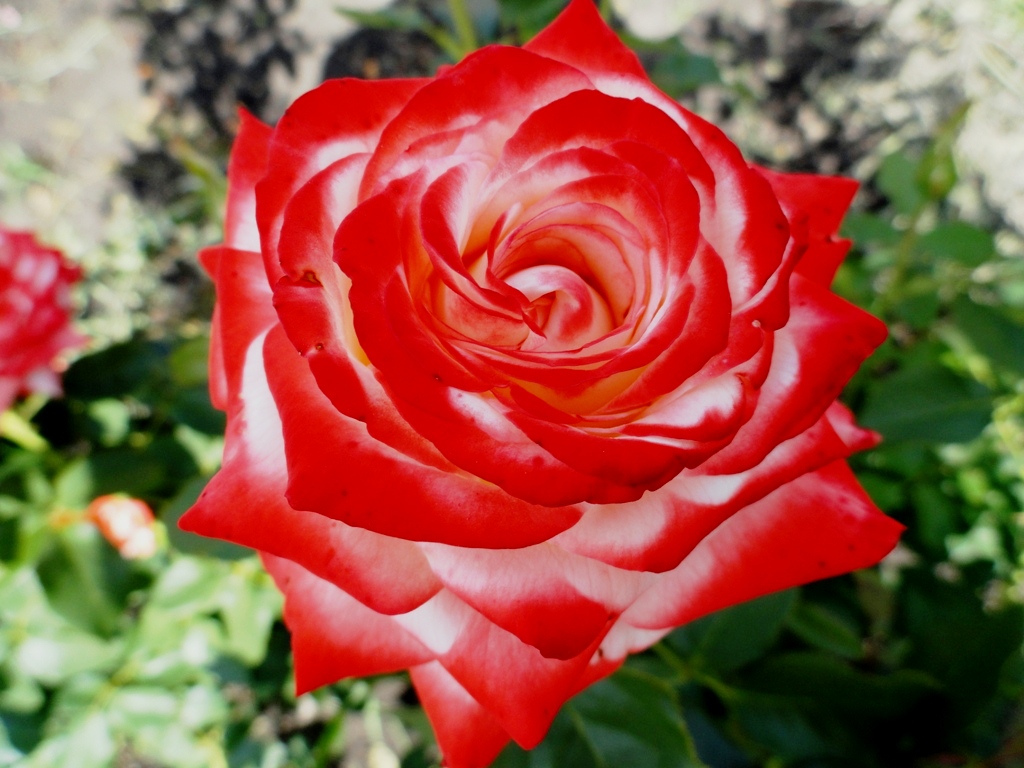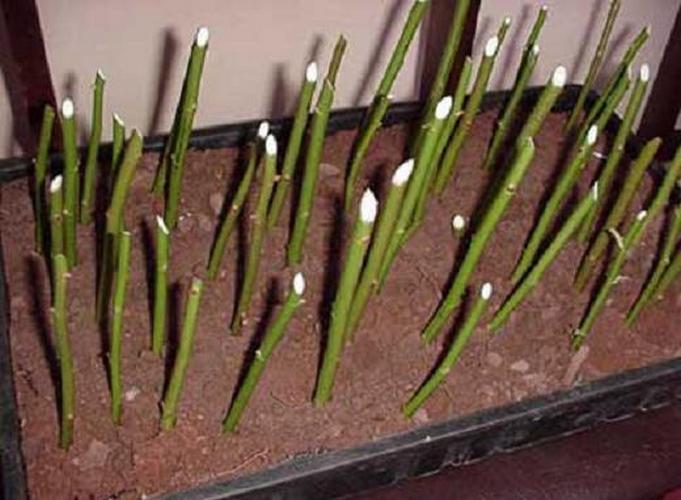Content:
Hybrid tea roses have all the qualities of tea roses, but are more resistant to various diseases. This allowed not only to preserve their decorativeness and aroma, but also to obtain good immunity. At the moment, many varieties of these hybrids of various sizes from 50 cm to 1 meter in height have been bred, a distinctive feature of which is continuous flowering from mid-June to autumn, resistance to many diseases and a combination of the delicate aroma of apple and pear.
The history of the creation of the hybrid tea variety Empress Farah
One of the most famous varieties with not only exceptional qualities, but also the history associated with the name, is the Imperatrice Farah rose. This rose was bred in 1992 in France by Georges Delbar and named after the Iranian shahini of Azerbaijani origin Pahlavi Farah, who is the only crowned female in Iran.
In 1959, the Shah of Iran met in France with a student of the architectural department, who conquered her with her mind and beauty and then became his wife.
In 1973, a rose was exhibited at the competition (despite its creator Georges Delbar), which received a prize. The commission for awarding the winner was chaired by Shahin Farah Pahlavi. The following year, the crowned lady came to France, and Georges Delbar was invited to a reception at the Grand Trianon Palace. He came with a basket of fragrant roses. As a result of the meeting, a contract was signed for the creation of a garden of 6 thousand hectares, and within 7 years more than 3 million seedlings of rose bushes were planted in Iran. The contract was interrupted due to the Iranian revolution.
Many years later, in a small shop of a French florist, the son of the famous designer, Henri Delbar, meets Farah Pahlavi and invites her to visit his father. During the visit, it was suggested to name one of the varieties of roses in her honor, distinguished by the beauty of large flowers and a fruity aroma.
Characteristics of the variety
Rose Empress Farah, as described in special literature, can grow from 80 cm to 120 cm in height and up to 80 cm in width. It has large, up to 15 cm in circumference, goblet double flowers. Inside they are white or white-greenish, and outside, in places of bending and at the ends of the petals, the color is from orange-red to crimson.
Opening, the bud stretches out, and it seems as if the flower is growing from a bud. Does not lose its decorative effect at full disclosure. Rose garden lovers claim that there is not one identical flower on the bush, each is unique. The leaves of the rose are light green, the bush is distinguished by thorniness, vigorous growth.Rose Farah has one bud, but thanks to the many shoots, a feeling of constant flowering of the bush is created. One flower blooms for 10 to 18 days. The cut plant is cut for a long time. It has a fruity aroma with a slight acidity.
The bushes are quite resistant to frost and changes in weather conditions. They are not afraid of rain and wind. They are not damaged by black spot and powdery mildew, they are unstable only to aphids, but it can be defeated if measures are taken in time.
Planting and leaving
The usual planting date for the Empress Farah hybrid tea rose is early May. Land requirements:
- slightly acidic;
- loose;
- loamy;
- fertile.
If the acidity of the soil is insufficient, you can add kefir to the water when watering. If the pH is high (more than 7) and the soil is alkaline, lime is added to the soil in autumn, and ash is added during the season, which is also an excellent fertilizer, supplying plants with potassium and trace elements.
Place chosen by:
- sunny;
- protected from the winds;
- with a low groundwater level (excess moisture can lead to decay of the root system).
Before planting in the ground, the purchased seedlings must be cut off, leaving 2 buds, treated with a growth stimulator, then placed in a slurry of clay with water for 2 hours so that the roots and the graft bud are in solution. They dig a hole 50 by 50 cm in size. Humus or compost is poured to the bottom. A glass of ash, 10 g of superphosphate is added, everything is mixed, a seedling is installed, covered with earth and watered. The seedling needs to be slightly spud, after 7-10 days, cover it with peat mulch.
Rose Empress Farukh is demanding in her care. In order for the bush to retain its decorative effect throughout the summer period, you will need:
- Pruning. In the spring, all weak and frozen shoots are removed from the bush. In autumn, all leaves and flowers are removed from the plant. This is done before the onset of cold weather, otherwise the bush can release new shoots, which will significantly reduce its winter hardiness during cold weather.
- Constant feeding. Immediately after awakening, the rose Empress Farah needs nitrogen. You can give the plant a complete complex fertilizer for roses, sprinkle with manure infused in water, or dilute dry droppings (sold in gardening stores) according to the recipe. During the budding period, potassium supplementation is necessary. Potassium sulfate, potassium monophosphate, ash are suitable here. You can add superphosphate and potassium sulfate before winter.
- Watering is necessary rare, but abundant. Usually, this is 2 buckets per bush in the absence of precipitation.
- Loosening it is necessary that oxygen is supplied to the roots of the rose.
- Hilling busheswhich is produced in October.
Reproduction
The best way to propagate the Empress Farah hybrid tea rose is by cuttings. Best suited for this purpose are shoots that are only half woody. Young thin or, conversely, fully ripe for grafting are not suitable.
Cuttings are cut during the budding period, early in the morning, when the branches are saturated with juices, and then immediately placed in a wet plastic wrap. If it is not possible to immediately plant it in the ground, you can store the cuttings on the lower shelf in the refrigerator for up to 14 days. It is also allowed to transport cut twigs over long distances in plastic, tightly tied bags with a little water. The stalk can be safely stored like this for 2 days.
For planting, take the central part of the shoot with 2-3 leaves, ranging in size from 5 to 8 cm, and above the upper bud, the cut is made perpendicular to the growth, and at the bottom - at an angle of 45 degrees. There should be 2-3 buds on the shoot. The lower leaf is removed, and the upper one is partially cut to reduce evaporation.The cuttings are treated with root stimulants for 18-20 hours, immersed in the solution by 1-1.5 cm ends. Heteroauxin (0.01%), Kornevin, sodium humate (1 tablet per 10 l of water), honey (1 tsp per 200 ml), aloe juice (10 drops per 200 ml) can serve as stimulants. Next, the cuttings should be rinsed with clean water and rooted.
Rooting is done in 2 ways:
- Placed for 2 weeks in a container with boiled water, put in the shade, changing the water every 2 days.
- Planted in a box or flower pot in the dim sun. If rooting takes place in open ground, the place should be illuminated by the sun only in the morning or evening.
A special substrate is prepared for rooting cuttings. A mixture of turf soil with compost or humus is poured at the bottom of the box, on top - either coarse river sand, or a mixture of sand with peat or vermiculite in a 1: 1 ratio. The mixture is poured in a layer of 3.4 cm. The cuttings are planted at an angle, burying them into the substrate by 1.5-2 cm. The planted shoots are covered with plastic bottles or glass jars, opening them daily from a spray bottle to irrigate the plants. Dried petals are removed. After 14-20 days, root rudiments (callus) will appear. The plants are opened and fed with nitrogen-containing fertilizers every 10 days. When the seedling is old enough, it can be planted in a permanent place.
Advantages and disadvantages
Of the advantages, everyone notes the unusual sweet and sour fruity aroma of Imperatrice Farah, the rose has an attractive appearance due to its two-color and large size of goblet noble flowers, which retain their decorative effect and do not fall apart, completely blossoming. Withstands both sun and wind. A blossoming flower stands for a very long time, is beautiful in cut.
Among the shortcomings noted:
- thorniness of the bush, which makes it difficult to care for it;
- blooms poorly without feeding and pruning;
- weak aroma.
With proper care, Rosa Empress Farah will delight the eye with unusually bright flowers. It is suitable both for decorating the site and for cutting.
















